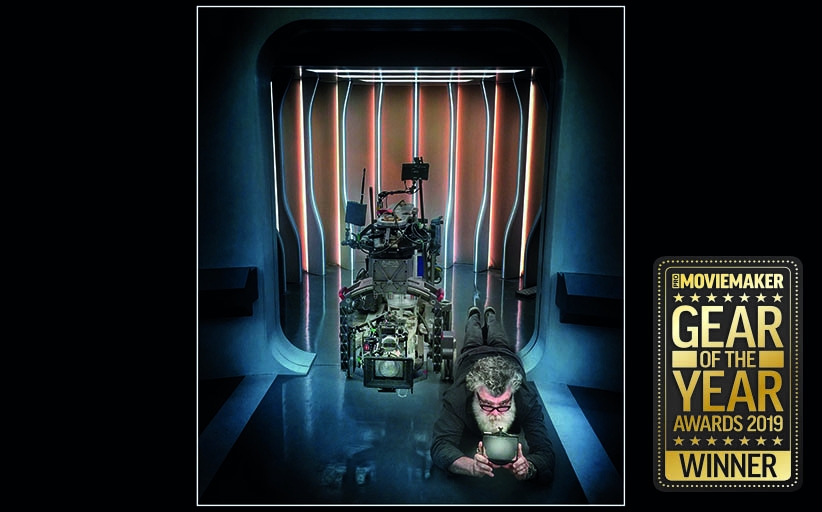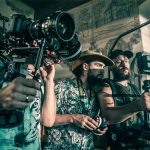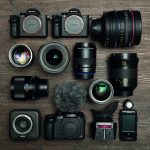
Starring role
Crescenzo Notarile decided to boldly go for Schneider-Kreuznach True-Streak filters when shooting a legendary sci-fi TV series
Advertisement feature
When a top Hollywood filmmaker calls his filters his “cinematographic brush” that he uses on many high-budget productions, you know they offer something very special. When Crescenzo Notarile landed the dream job of shooting the Star Trek: Discovery TV series, he knew he could rely on his trusty set of Schneider-Kreuznach True-Streak filters to make something that would live long and prosper.
“Like a painter constructs his strokes of paint with the bristles of his brush, I like to think in the same way by constructing the strokes of light via certain filters,” he says.
With an incredible back catalogue of work that includes TV and movie projects like Crazy and Timecop, plus music videos for the likes of Michael Jackson, Pink Floyd and ZZ Top, Notarile has the eye to pick equipment that allows him to put his own creative stamp on his projects.
“I previously used the True-Streak filters on a show I did called CSI: Crime Scene Investigation,” he explains. “Working in the CSI laboratory with all the layers of glass and forensic lights truly was calling for these filters. It became my signature look.
“I then brought this approach to my next show, called Gotham. We were often shooting at night in dark alleys and the Gotham detectives would often pull out their flashlights to see where they were going. To see a flare of light explode across this dirty landscape frame, via a True Streak filter, always gave me a lift! It’s exciting to see energy from light dance across your frame!”
When it came to shooting Star Trek: Discovery, Notarile worked with legendary names like fellow DOP Glen Keenan, Star Trek visionary Alex Kurtzman and producing director, Olatunde Osunsanmi.
And of course, Notarile had all the best equipment at his disposal. He used up to five Arri Alexa SXTs, two huge Technocranes, two Steadicams worked by experts François Daignault and Michael Carr, and lots of LED lights programmed into a dimmer board with hundreds of channels individually available to fine-tune the look.
“Each set cost hundreds of thousands of dollars, some cost millions, and took many months to design and construct. Each had its own intricate lighting designs.”
One of the key looks many sci-fi films use is the unique results you get from anamorphic lenses, with the trademark long flares. It’s no surprise Notarile chose Cooke SF anamorphic lenses. “When I got a call to do a sci-fi show, the first thing that came to mind was explosions and flares of light. You are in darkness in outer space, and when the sun rakes in, it explodes with energy.
“So we used Cooke special flaring lenses, as we wanted to embrace flaring and I enhanced this with the Schneider True-Streak filters,” he says. “I love these filters and carry them in my personal kit wherever I go. I have a range of colours: blue, green, orange and clear. Depending on the emotion of the scene, and of course the lighting. I choose the colour carefully, so it subconsciously works without standing out as indulgent. The trick is to do with integrity, not taking away from the story.”
Using Schenider-Kreuznach True-Streak filters on already flare-prone anamorphic lenses gives the ultimate in long flares. It’s a look that also works very well on standard lenses, giving an anamorphic-style look. It’s no surprise they were voted as best Lens Accessory in the Pro Moviemaker Gear of the Year Awards. Nothing highly illogical there.
“I love these filters because I love the energy of light. I love when light refracts, flares and dances across the coatings of the lens,” says Notarile. “To me, this is the art of what we do – provide visual stimuli.”
The next chapter of Notarile’s career is to make Star Trek: Picard, with Sir Patrick Stewart. “This show is very different as Picard is much more introverted and cerebral, where Discovery is visual and testosterone! So I am currently thinking very carefully about this visual approach to this show,” says Notarile. “I’m sure Schneider optics will be in my tool kit, no matter what.”
Click here to visit the Schneider Kreuznach website.
Click here to visit Crescenzo Notarile’s website.










